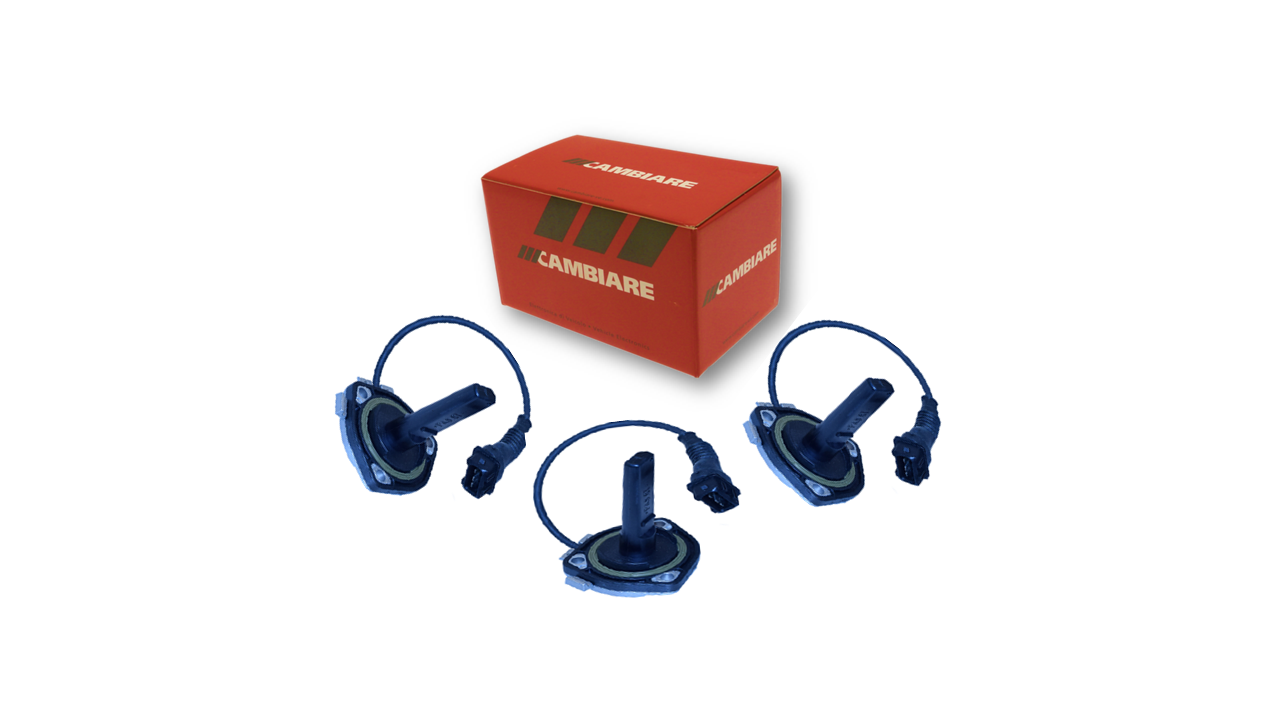Engine Management

Cambiare Oil Level SensorsSENSING THE TROUBLE CAMBIARE elaborates on the workings of an important element within the engine management system– Oil Level Sensors to help factors develop brand new profit streams. Vehicle electronics specialist Cambiare understands the importance of introducing such products that are relevant to the current aftermarket demands or help meet various regulatory requirements placed on modern engine systems. Keeping this in mind, Cambiare has recently introduced a short range of oil level sensors, while extending on its successful range of exhaust gas temperature sensors (EGTS).
OIL LEVEL SENSORS Having identified a yet untapped business opportunity in the aftermarket, Cambiare has introduced a sleek range of 10 oil level sensors, covering 1.2 million vehicles on the UK roads, which provides an ideal stocking option for the factors.
FORM AND FUNCTION The oil level sensor plays a simple but critical part in the functioning of the engine. Its purpose is to monitor the engine oil level and alert the driver when it goes beyond acceptable limits. Not acting on the signal promptly could lead to significant engine damage and consequently, expensive repairs.
Whilst there are various kinds of oil level sensors, Cambiare’s range includes the latest technologies, such as the Ultrasonic type. Ultrasonic sensors are transducers that convert ultrasound waves to electrical signals or vice versa. Essentially acting like microphones, they detect ultrasonic noise present under certain conditions, convert it to an electrical signal and relay this information back to the driver as dashboard warnings.
Fig 2 shows a vehicle’s oil level threshold. As stated above, an oil level sensor warning light on the dashboard will light up when the engine is running low on oil. However, some vehicles have check control systems which warn the driver when the oil level is either too low or too high. REPLACEMENT The oil level sensor is mostly located on the sump and is fixed in place with three or four bolts and an electrical connector (Fig 3). Depending on its location, the replacement of the sensor can be quite straightforward. However, any residual oil should be drained before changing the sensor.
Warning Lights If the dashboard warning light keeps illuminating or the oil gauge reads low even after a top-up, there is a good chance that the oil level sensor is faulty.
In such situations, the following steps are recommended: 1. The oil level should be checked manually with a dipstick, wherever possible 2. If the reading is full, the circuit should be tested for wiring defects 3. The oil level sensor should only be replaced if found faulty and all other faults have been checked for
As well as Cambiare’s OE quality assurance and a wide coverage through such a short range, there are plans to extend the range further, depending on incoming market demands.
VALUE ADDED SERVICES • All parts are OE quality and offer 2 year/30,000 mile warranty. • Parts catalogued on Cambiare website: www.cambiare-ve.com as well as MAM Autocat+ and the F:Drive; search path: Fuel & Engine Management>Engine Management & Fuel Inj. Parts> Oil Level Sensors or Exhaust Gas Temperature Sensors. • Cambiare offers technical support via a devoted hotline no. 0845 543 8280. Speak to a local Cambiare representative for more information.
|
Related Articles Related Downloads |